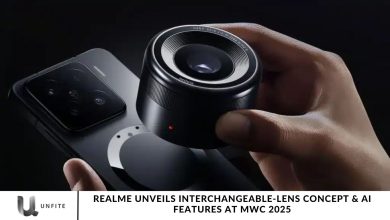All iPhone 16 Models to Feature Unified A18 Bionic Chipset

Following the official release of the iPhone 15 series, leaks and rumors about the iPhone 16 are beginning to emerge online. Recent speculation suggests that all iPhone 16 models may be equipped with the same A18 Bionic chipset.
The focus is now on the iPhone 16 lineup’s chipset, with recent reports hinting at potential camera enhancements for the iPhone 16 Pro. Apple may consider using a uniform chipset across all 16 iPhone models.
In this article, we’ll explore whether the iPhone 16 models will feature the A18 Bionic chipset and examine how this decision could affect overall iPhone sales.
iPhone 16 Series Chipset Details Leaked
According to renowned analyst Jeff Pu (via Wccf Tech), all iPhone 16 models will be powered by the forthcoming A18 Bionic chipset, built on TSMC’s advanced 3nm process. This marks a departure from Apple’s previous strategy with the iPhone 14 series, which used different chipsets for non-Pro and Pro models.
Previously, the A15 Bionic chipset, introduced with the iPhone 13 series, was used in the iPhone 14 and 14 Plus. The A16 Bionic chipset was exclusive to the iPhone 14 Pro models. For the iPhone 15 series, both the iPhone 15 and 15 Plus were equipped with the A16 Bionic, while the more advanced A17 Pro Bionic chipset, also built on a 3nm architecture, was reserved for the iPhone 15 Pro and 15 Pro Max.
How Will The A18 Chipset Be Used?
The standard iPhone 16 models are expected to feature the A18 chipset, while the iPhone 16 Pro models will be equipped with the A18 Bionic chip. Both chipsets will be built on TSMC’s advanced second-generation N3E process, which promises improvements in performance, efficiency, and battery management compared to the N3B technology used in the A17 Pro chipset.
These enhancements will ensure that all iPhone 16 models offer significant upgrades over their iPhone 15 predecessors, potentially attracting users who were previously undecided about their choice.
Despite the similarities between the two chipsets, differences will remain. Features such as a ProMotion display and exclusive camera functionalities will distinguish the iPhone 16 and 16 Plus models from their Pro and Pro Max counterparts.
Unified Chipset Strategy: A Departure from the Norm

Historical Context: Apple’s Previous Chipset Strategy
The iPhone 13 Series and Early Chipsets
- A15 Bionic Chipset: Introduced with the iPhone 13 series, the A15 Bionic chipset was designed to deliver significant performance improvements and efficiency gains over its predecessors. It was used across the iPhone 13, 13 mini, 13 Pro, and 13 Pro Max models.
- Differentiation: The iPhone 13 Pro models received additional GPU cores and improved computational power compared to the standard models, marking Apple’s initial strategy to differentiate between its Pro and non-Pro devices.
The iPhone 14 Series and the A16 Bionic
- Chipset Allocation: With the launch of the iPhone 14 series, Apple continued its differentiated approach. The A15 Bionic was retained for the iPhone 14 and 14 Plus, while the A16 Bionic was introduced exclusively for the iPhone 14 Pro models.
- Performance Enhancements: The A16 Bionic brought further advancements in CPU and GPU performance, along with enhanced power efficiency, but was limited to the Pro versions, reinforcing the performance divide between Pro and non-Pro models.
The iPhone 15 Series and the A17 Pro Bionic
- A16 Bionic and A17 Pro Bionic: The iPhone 15 and 15 Plus models were equipped with the A16 Bionic, while the more advanced A17 Pro Bionic, built on a 3nm architecture, was reserved for the iPhone 15 Pro and 15 Pro Max.
- Strategic Implications: This approach highlighted Apple’s strategy to offer enhanced features and performance only in the Pro models, catering to a segment of users who sought high-end specifications.
How the iPhone 16 Differs from iPhone 15 and Earlier Models
Unified Chipset Strategy
- Consistent Performance Across Models: Unlike previous generations, where Pro models received advanced chipsets, the iPhone 16 will feature the same A18 Bionic chipset across all models, including the standard iPhone 16, 16 Plus, 16 Pro, and 16 Pro Max.
- Impact on User Experience: This shift signifies a move towards providing a uniform level of performance across the entire lineup, potentially broadening the appeal of all models by offering high-performance capabilities without differentiating by chipset.
Technological Advancements
- TSMC’s N3E Process: The A18 Bionic chipset, built on TSMC’s second-generation N3E process, promises improvements in processing power, efficiency, and battery life compared to the N3B technology used in the A17 Pro.
- Performance Gains: Users can expect notable enhancements in speed and efficiency, which will be uniformly experienced across all iPhone 16 models.
Enhanced Features for Pro Models
- Additional Upgrades: Despite the unified chipset, the iPhone 16 Pro and 16 Pro Max are likely to have exclusive features such as advanced camera systems and ProMotion displays, which differentiates them from the standard iPhone 16 models in terms of functionality and user experience.
Advantages of Using a Unified Chipset Across All Models
Improved Performance Consistency
- Uniform Experience: All iPhone 16 models will benefit from the same level of performance, ensuring that even the base models deliver high-end capabilities. This consistency can lead to a more satisfying user experience regardless of the chosen model.
Cost Efficiency
- Manufacturing and Pricing: A unified chipset strategy may reduce manufacturing costs and streamline production processes, potentially leading to more competitive pricing and better value for consumers across all models.
Simplified Product Line
- Consumer Choice: With a single chipset powering all models, consumers can make purchasing decisions based on features and design preferences rather than being concerned about performance disparities. This can simplify the decision-making process and make it easier for users to choose the iPhone that best fits their needs.
Enhanced Marketing and Sales
- Marketing Appeal: Apple’s unified chipset allows It to market all 16 iPhone models as having cutting-edge technology, enhancing the appeal of the entire lineup and potentially driving higher sales volumes across different consumer segments.
Impact on iPhone 16 Performance and Efficiency
Expected Performance Gains with the A18 Bionic Chipset
Enhanced Processing Power
- Next-Generation CPU: Thanks to its advanced CPU architecture, the A18 Bionic chipset is expected to deliver significant boosts in processing power. Users can anticipate faster app launches, smoother multitasking, and overall improved performance in demanding tasks.
- Improved Graphics: With upgraded GPU cores, the A18 Bionic will offer enhanced graphics performance, benefiting users who engage in high-resolution gaming, augmented reality (AR) applications, and video editing.
Advanced AI Capabilities
Neural Engine Enhancements: The A18 Bionic will likely feature an upgraded Neural Engine, which will provide faster and more efficient processing for machine learning tasks. This will enhance features like facial recognition, photo and video enhancements, and real-time language translation.
Superior Computational Efficiency
Faster Processing: The A18 Bionic’s enhanced architecture will result in quicker data processing, leading to a more responsive device. This improvement is crucial for applications that require heavy computation, such as advanced photo editing and 4K video playback.
Battery Life and Efficiency Enhancements
Improved Power Efficiency
- TSMC’s N3E Process: Built on TSMC’s second-generation N3E process, the A18 Bionic is designed to be more power-efficient than its predecessors. Reducing the chipset’s power consumption during high-performance tasks results in longer battery life.
- Adaptive Power Management: Enhanced power management technologies within the A18 Bionic will optimize battery usage based on current tasks, ensuring that power is allocated efficiently and extending the overall battery lifespan.
Extended Usage Time
Optimized Battery Performance: The A18 Bionic’s efficiency improvements bring extended battery life, allowing for longer periods between charges. This is particularly advantageous for users who rely on their devices throughout the day for various tasks.
Enhanced Thermal Management
Heat Dissipation Improvements: The A18 Bionic’s advanced manufacturing process will improve heat dissipation, reducing the likelihood of thermal throttling and maintaining optimal performance during prolonged use.
Comparisons to the A17 Pro Chipset
Processing Specy
- Technological Advancements: The shift from the A17 Pro’s N3B technology to the A18 Bionic’s N3E process is expected to yield better power efficiency. While the A17 Pro has already made strides in this area, the A18 Bionic will offer further improvements, resulting in longer battery life and reduced energy consumption.
Heat and Thermal Management
- Thermal Efficiency: The A18 Bionic’s improved thermal management, owing to advancements in manufacturing technology, will offer better heat dissipation compared to the A17 Pro. This means the A18 Bionic can sustain high performance for more extended periods without significant thermal throttling.
Overall User Experience
- Consistency Across Models: Unlike the A17 Pro, which was reserved for Pro models, the A18 Bionic will be used across all iPhone 16 variants. This ensures that all users experience the high performance and efficiency of the latest chipset, regardless of their device choice.
What This Means for iPhone 16 Models

Expected Performance Improvements for Standard vs. Pro Models
Consistent Performance Across the Lineup
- Unified A18 Bionic Chipset: Both standard and Pro models of the iPhone 16 series will benefit from the same A18 Bionic chipset, ensuring a baseline of high performance across the entire range. Users of the iPhone 16 and iPhone 16 Plus will experience the same advancements in processing speed, graphics performance, and AI capabilities as those using the iPhone 16 Pro and iPhone 16 Pro Max.
Specialized Features for Pro Models
- Enhanced Hardware: Despite sharing the A18 Bionic chipset, the Pro models are expected to include additional specialized hardware that enhances their capabilities beyond the standard models. This could consist of advanced camera systems, higher refresh rate displays (ProMotion), and extra RAM, which will offer superior performance in specific tasks.
- Exclusive Software Features: The iPhone 16 Pro and Pro Max may come with exclusive software features or optimizations that leverage their additional hardware, providing users with enhanced photography options, more immersive AR experiences, and other high-end functionalities.
Performance Optimization
- Efficient Task Management: The Pro models may benefit from better thermal management and optimized task allocation, ensuring that demanding applications run smoothly even under heavy usage. This could translate to superior performance in professional applications and multitasking scenarios compared to the standard models.
How the Unified Chipset Will Influence User Experience
Enhanced User Experience Across Models
- Uniform Performance: With the A18 Bionic chipset across all models, users can expect a consistent and high-quality experience regardless of which iPhone 16 model they choose. This means that even the base models will deliver impressive performance, reducing the gap between Pro and non-Pro versions in terms of speed and responsiveness.
- Streamlined Software Updates: A unified chipset allows for more simplified and consistent software updates and optimizations, as Apple can tailor enhancements and features to a single hardware platform. This can lead to a more cohesive user experience and quicker adoption of new software innovations.
Simplified Consumer Decision-Making
- More precise Choices: The use of the same chipset across all models simplifies the decision-making process for consumers. They can focus on other factors like design, camera features, and display options rather than being concerned about performance differences between models.
- Balanced Performance: Users looking for a high-performance device without the need for Pro-level features will find that the standard models offer exceptional performance, making it easier to choose a device that fits their needs and budget.
Improved Longevity
- Future-Proofing: The A18 Bionic’s advanced technology ensures that all iPhone 16 models are equipped to handle future software updates and applications. This contributes to a longer lifespan for the devices, as they will remain capable of running new features and apps efficiently over time.
Potential Benefits for Consumers
Better Value for Money
- Enhanced Features Across All Models: With the unified A18 Bionic chipset, consumers get high performance and advanced features in every iPhone 16 model, providing better value for money. The consistent performance means that users of the standard models are not compromising on speed or efficiency.
Increased Accessibility
- Broader Appeal: By offering high-performance capabilities in all models, Apple makes advanced technology more accessible to a broader audience. Users who might have previously opted for the Pro models to get the latest technology can now enjoy similar benefits in the standard versions.
Simplified Upgrades
- Easier Transition: For existing iPhone users considering an upgrade, the uniform chipset across the lineup makes it easier to transition between models. They can upgrade to a higher-tier model for additional features and refinements without worrying about a significant performance difference.
Enhanced Customer Satisfaction
- Consistent Performance Experience: The uniform performance experience across all iPhone 16 models enhances overall customer satisfaction, as users can expect reliable performance from any model they choose. This consistency helps build trust in the product line and reduces potential frustrations associated with performance discrepancies.
Frequently Asked Question
What is the A18 Bionic chipset?
The A18 Bionic chipset is Apple’s latest processor, featuring advanced technology designed to enhance performance, efficiency, and battery life. It is built on TSMC’s second-generation N3E process, which provides significant improvements over previous chipsets.
Will all iPhone 16 models have the same performance?
Yes, all iPhone 16 models, including the standard iPhone 16, 16 Plus, 16 Pro, and 16 Pro Max, will feature the A18 Bionic chipset.
This ensures a consistent level of performance across the entire lineup.
How does the A18 Bionic chipset improve performance compared to previous models?
The A18 Bionic offers enhanced CPU and GPU performance, faster processing speeds, and improved AI capabilities. It also benefits from better power efficiency and thermal management, leading to smoother operation and longer battery life.
What are the benefits of using a unified chipset across all iPhone 16 models?
Using the same A18 Bionic chipset across all models ensures consistent performance and efficiency, simplifies consumers’ decision-making process, and provides better value for money. It also allows for streamlined software updates and optimizations.
Will there be any differences between the standard and Pro models despite the unified chipset?
While the A18 Bionic chipset will remain the same, the iPhone 16 Pro and Pro Max models are expected to feature additional specialized hardware and exclusive software features, such as advanced camera systems and higher refresh rate displays, which will enhance their performance beyond that of the standard models.
How will the A18 Bionic chipset impact battery life?
Thanks to its advanced manufacturing process, the A18 Bionic chipset is designed to be more power-efficient than its predecessors. This will lead to improved battery life and better power management, allowing users to use their devices for longer periods between charges.
Will the A18 Bionic chipset support the latest software features and applications?
Yes, the A18 Bionic chipset’s advanced processing power and AI capabilities will support the latest software features and applications, ensuring that all iPhone 16 models can handle future updates and new technologies effectively.
How does the A18 Bionic chipset compare to the A17 Pro chipset?
The A18 Bionic chipset offers advancements over the A17 Pro, including improved CPU and GPU performance, enhanced power efficiency, and better thermal management. It represents a step forward in technology, providing superior performance and battery life.
Conclusion
The decision to equip all iPhone 16 models with the unified A18 Bionic chipset marks a significant shift in Apple’s approach to performance and technology across its product lineup. By adopting the same advanced chipset for every model, Apple ensures a consistent and high-quality user experience, regardless of the iPhone 16 variant you choose. This strategy promises not only enhanced performance and efficiency but also improved battery life, thanks to the advanced N3E process used in the A18 Bionic.
Consumers can look forward to a more straightforward decision-making process, knowing that every iPhone 16 model will deliver robust performance and support for the latest features and applications. While the Pro models will still benefit from additional specialized hardware and unique software capabilities, the unified chipset guarantees that even the standard models will offer impressive speed, reliability, and efficiency.




